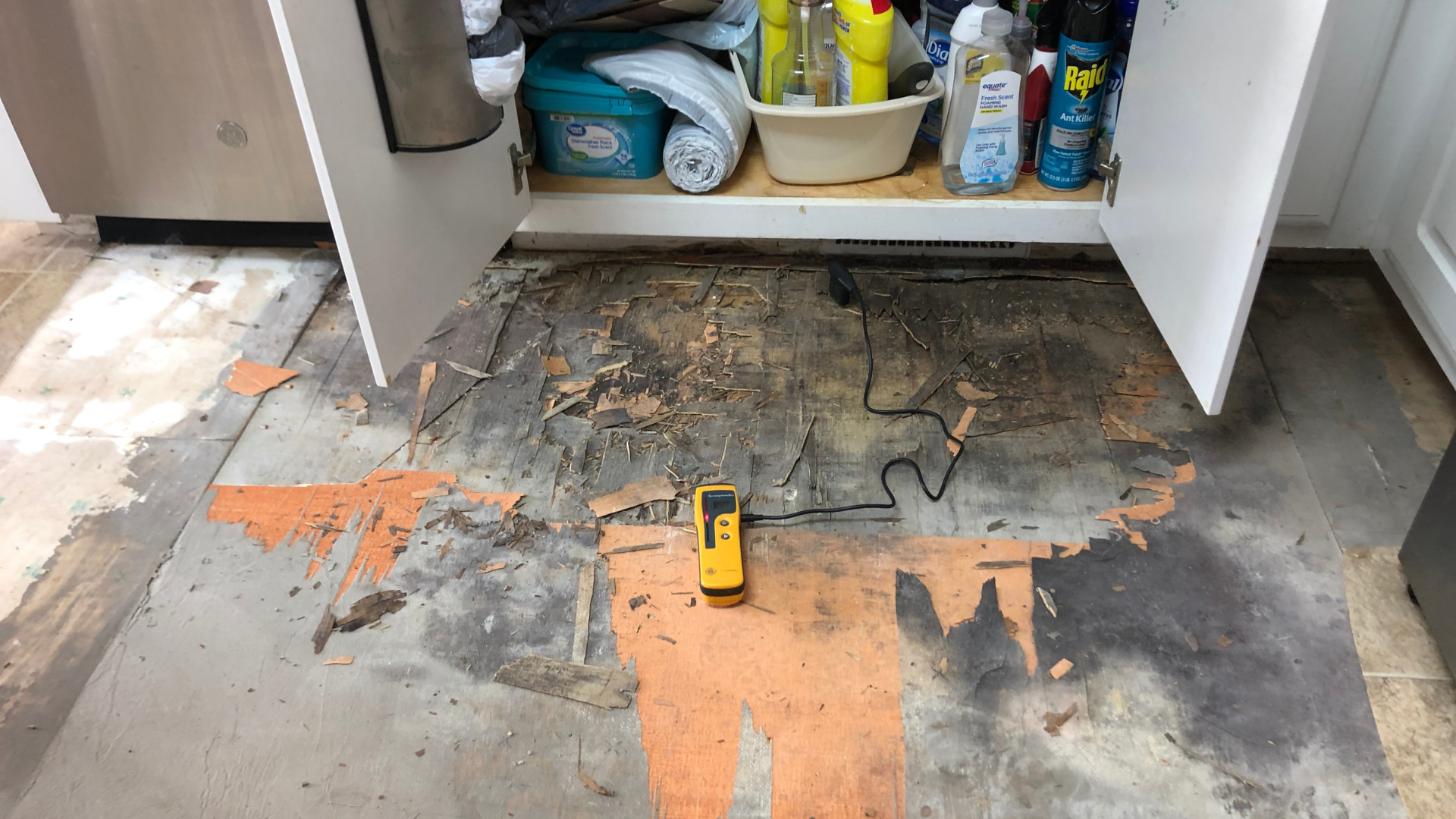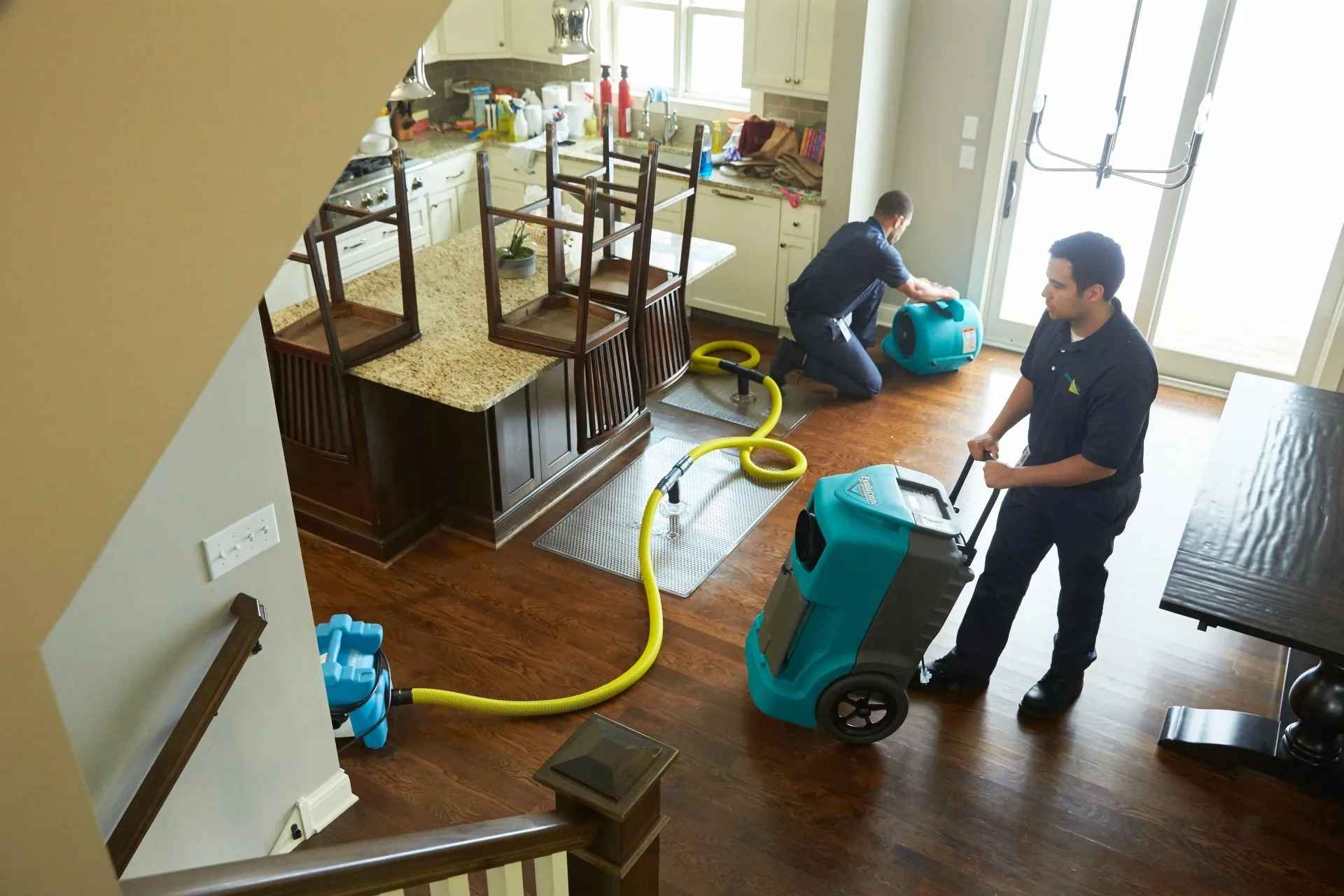Water Damage Restoration 101: Understanding the Process and Cost
Water damage can strike all of a sudden, leaving house owners in a state of confusion. Recognizing the restoration process is essential for efficient recovery. From reviewing the damage to choosing the right provider, each step affects the overall outcome and expense. Elements such as the kind of water damage and urgency also play a significant function. What are the details techniques used in reconstruction, and just how can one prepare for potential costs?
Sorts Of Water Damage

Initial Assessment and Examination

Water Removal Strategies
Following the first evaluation, effective water removal methods are employed to reduce damage and prevent more problems. These techniques entail the use of customized tools such as industrial-grade vacuum cleaners and submersible pumps - Flood Cleanup Services. The selection of technique depends upon the volume of water existing and the kind of materials affected. For standing water, submersible pumps are generally utilized for fast elimination, while vacuum cleaners are perfect for extracting water from carpetings and furniture. Additionally, progressed approaches like water removal mats may be employed for hard-to-reach locations - Water Damage Restoration. The goal is to get rid of as much water as feasible, reducing the possibility for mold development and architectural damage. Prompt and efficient water removal is vital in the general water damage remediation procedure
Drying Out and Dehumidification Process
Once the water removal is total, the drying and dehumidification procedure becomes important to restoring the damaged area. This stage normally employs industrial-grade dehumidifiers and air moving companies to successfully reduce wetness levels. The dehumidifiers reel in damp air, getting rid of excess moisture, while air movers distribute air to speed up evaporation. Monitoring equipment is often utilized to track humidity and temperature degrees, ensuring excellent drying conditions. The period of this process can vary depending on the degree of the water damage and environmental factors. It is necessary to thoroughly dry all impacted materials, consisting of walls, floor covering, and home furnishings, to avoid mold and mildew growth and structural damage. Correct implementation of this action is important for an effective remediation result.
Cleaning and Sanitizing Damaged Areas
A detailed first analysis and examination of influenced locations is important to determine contamination levels as soon as the drying procedure is total. Flood Cleanup Services. Efficient cleansing strategies and suitable products must after that be employed to eliminate debris and stains. Sanitization and disinfection techniques are crucial to assure that hazardous microorganisms are removed, bring back the area to a risk-free problem.
First Evaluation and Examination
Prior to starting any kind of repair initiatives, an extensive first analysis and inspection of the impacted areas are crucial for effective cleaning and sanitizing. This procedure includes determining the level of water damage, establishing the source of the water intrusion, and reviewing the products affected. Assessors normally seek indications of mold development, structural integrity issues, and damaged valuables. The assessment additionally includes examining wetness degrees using specialized tools to ensure no surprise water pockets continue to be, as these can bring about additional problems. Recording the findings is essential for planning the following actions in the reconstruction procedure. A thorough first analysis allows restoration specialists to develop a targeted method for reliable cleaning and disinfecting, ultimately reducing damage and wellness risks.
Cleansing Methods and Products
Reliable cleaning and disinfecting of water-damaged areas call for a selection of items and strategies tailored to the particular products influenced. For porous surfaces like drywall and carpets, extraction approaches are necessary to get rid of excess dampness, followed by deep cleaning with specialized detergents. Non-porous materials such as floor tile or metal can be cleaned using commercial-grade cleaners that efficiently remove contaminants. Heavy steam cleansing is another efficient method, specifically for carpets and upholstery, as it uses high temperatures to get rid of microorganisms and mold (Water Damage Restoration). Additionally, environment-friendly items are significantly preferred for their safety and security and efficiency - Water Damage Restoration. Eventually, picking the ideal cleaning techniques and products not only guarantees instant sanitation yet likewise help in preventing additional damage and carcinogen associated with water breach
Sanitization and Disinfection Techniques
When dealing with water damage, appropriate sanitization and disinfection methods are important to ensure the safety and wellness of the afflicted environment. After initial cleansing, surfaces should be treated with proper disinfectants to get rid of microorganisms, mold, and microorganisms that prosper in moist conditions. Typical approaches consist of using EPA-approved chemical disinfectants, which can be applied via spraying or cleaning techniques. In addition, ultraviolet (UV) light systems can efficiently sterilize locations by neutralizing bacteria without rough chemicals. The option of approach typically relies on the type of products affected and the degree of contamination. Eventually, comprehensive sanitization not just recovers a secure home yet additionally assists prevent future health risks linked with lingering wetness and mold and mildew growth.

Fixings and Restoration Options
Assessing the damage triggered by water direct exposure is vital for click site identifying the proper repair services and reconstruction alternatives. Home owners might encounter different problems, consisting of damaged drywall, distorted floor covering, and jeopardized architectural elements. Depending upon the level of the damage, repair services might include replacing sections of drywall, installing brand-new flooring, or reinforcing architectural beam of lights. In cases of extreme damage, total replacement of afflicted materials may be necessary. Furthermore, professional restorers typically recommend utilizing moisture meters to assess hidden dampness degrees before selecting the most effective program of action. It is very important to act quickly to avoid mold and mildew development and more damage. Choosing the best options not just recovers the property but also assures long-lasting safety and capability.
Elements Influencing Restoration Prices

The level of water damage directly impacts the restoration costs house owners can expect to incur. Elements such as the resource of the water, the duration of direct exposure, and the affected products significantly affect prices. For circumstances, tidy water damage from a damaged pipeline is usually much less pricey to restore contrasted to damage brought on by sewer. Furthermore, the degree of contamination dictates the need for specialized cleaning and disposal solutions, better enhancing costs. Geographic place likewise contributes, as local labor rates and availability of reconstruction services can vary. The necessity of the feedback impacts expenses; quicker interventions generally lead to lower total expenditures by protecting against additional damage. Comprehending these aspects is important for property owners when estimating restoration costs.
The three primary kinds of water damage are classified based on contamination degrees: tidy water, grey water, and black water. A detailed initial assessment and inspection are vital actions in the water damage reconstruction procedure. For standing water, completely submersible pumps are normally utilized for rapid removal, while vacuum cleaners are ideal for removing water from carpetings and upholstery. The extent of water damage directly impacts the reconstruction sets you back homeowners can anticipate to sustain. Clean water damage from a busted pipeline is usually much less costly to recover contrasted to damage triggered by sewage.